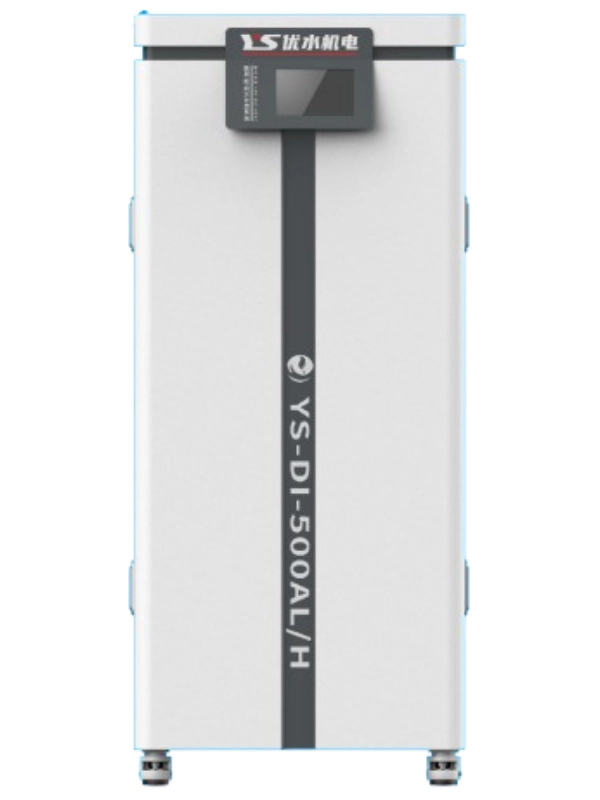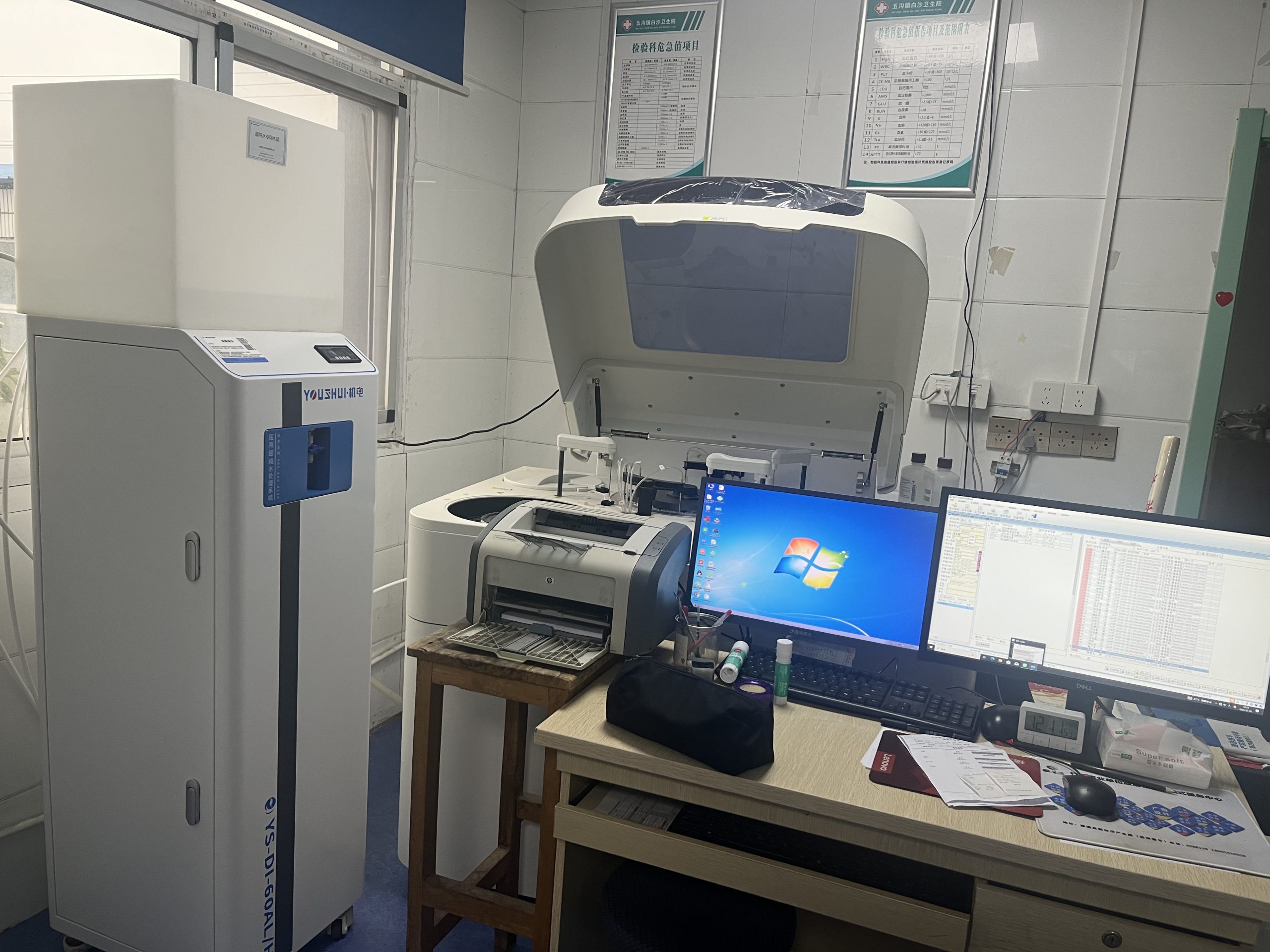احتياطات تركيب وتشغيل معدات المياه فائقة النقاء
وقت الإصدار: 2025-09-25
تُستخدم معدات المياه فائقة النقاء، كأداة أساسية لمعالجة المياه، على نطاق واسع في أشباه الموصلات، والأدوية، والإلكترونيات، والمختبرات، وغيرها من المجالات. يؤثر أداء هذه المعدات بشكل مباشر على جودة المياه وكفاءة عملية الإنتاج؛ لذا، تُعدّ مراحل التركيب والتشغيل بالغة الأهمية. ستُقدّم شركة U-Water احتياطات التركيب والتشغيل لمعدات المياه فائقة النقاء لمساعدة المستخدمين على ضمان التشغيل الطبيعي للمعدات وإطالة عمرها الافتراضي.
التحضير قبل التثبيت
قبل التثبيت معدات المياه فائقة النقاء عالية الأداءيجب تجهيز بيئة التركيب بشكل كامل. أولاً، تأكد من أن موقع التركيب يلبي متطلبات تشغيل المعدات، مثل التهوية الجيدة، ودرجة الحرارة والرطوبة المناسبتين، وتجنب أشعة الشمس المباشرة. بالإضافة إلى ذلك، يجب على المُركِّبين فحص الأنابيب والوصلات ومصادر الطاقة ومرافق الصرف الصحي ذات الصلة للتأكد من أنها تلبي معايير تشغيل المعدات.
يتضمن التحضير قبل التثبيت ما يلي:
فحص البنية التحتية للمعدات، مثل ما إذا كان مصدر الطاقة والجهد يلبيان المتطلبات، وما إذا كانت أنابيب المياه تفي بالمواصفات.
قم بتنظيف منطقة التثبيت لتجنب وصول الغبار أو أي حطام آخر إلى المعدات.
التأكد من أن المثبتين على دراية بالمعايير الفنية للمعدات ومتطلبات التثبيت.
خطوات تركيب معدات المياه فائقة النقاء
أثناء تركيب أجهزة المياه فائقة النقاء، من الضروري اتباع دليل التعليمات بدقة لتجنب الأعطال أو التلف الناتج عن التركيب غير السليم. فيما يلي خطوات التركيب الأساسية:
ربط مصدر المياه: تأكد من توصيل أنبوب المدخل بشكل صحيح بواجهة مصدر المياه الخاص بالجهاز، وتأكد من عدم وجود أي تسريبات. قبل التركيب، تحقق من جودة المياه لضمان مطابقتها لمتطلبات الجهاز.
تثبيت مكونات الفلتر: معدات المياه فائقة النقاء يتكون عادةً من عدة مكونات ترشيح، مثل مرشحات المعالجة المسبقة، وأغشية التناضح العكسي، وأجهزة المعالجة اللاحقة. يجب أن يتوافق تسلسل التركيب وطريقة توصيل كل مكون بدقة مع تعليمات الشركة المصنعة.
تركيب مضخة المياه ونظام التحكم في الضغط: تأكد من تثبيت مضخة المياه بشكل آمن وتوصيلها بسلك الطاقة لضمان ضغط تدفق المياه الثابت.
ربط مصدر الطاقة ونظام التحكم التلقائي: قم بتوصيل الجهاز بمصدر الطاقة وتأكد من توصيل نظام التحكم التلقائي بشكل صحيح، مما يتيح بدء التشغيل والتشغيل العادي.
احتياطات أثناء التشغيل:
بعد التركيب، تأتي مرحلة التشغيل لضمان عمل جهاز المياه فائقة النقاء بشكل طبيعي، وضمان جودة المياه بما يلبي التوقعات. تتضمن الخطوات الرئيسية في عملية التشغيل ما يلي:
فحص جودة المياه: قبل تشغيل الجهاز، يُرجى فحص جودة مياه المصدر للتأكد من مطابقتها لمتطلباته. في حال كانت جودة مياه المصدر رديئة، قد يلزم استخدام معدات معالجة أولية إضافية لضمان عمل غشاء التناضح العكسي ومكونات الترشيح الأخرى بشكل سليم.
بدء تشغيل المعدات والتحقق من التسرب: عند تشغيل جهاز المياه فائقة النقاء، افحص جميع وصلات الأنابيب والصمامات بحثًا عن أي تسريبات. يجب معالجة أي تسريبات على الفور لتجنب تلف الجهاز أو هدر المياه.
ضبط تدفق المياه والضغط: اضبط تدفق المياه وضغط المضخات عبر نظام التحكم لضمان عمل المعدات بأفضل حالة. وفي الوقت نفسه، تحقق من ضغط تشغيل كل مكون من مكونات الترشيح لتجنب الضغط الزائد أو غير الكافي الذي يؤثر على كفاءة الترشيح.
اختبار جودة المياه: أثناء التشغيل، يجب اختبار جودة مياه الصرف. استخدم أدوات اختبار جودة المياه المناسبة لضمان قدرة الجهاز على إنتاج مياه فائقة النقاء مطابقة للمعايير. يُعد اختبار جودة المياه بالغ الأهمية في الصناعات ذات متطلبات جودة المياه العالية للغاية، مثل الصناعات الدوائية وأشباه الموصلات.
الصيانة الدورية والفحص
إن تركيب وتشغيل معدات المياه فائقة النقاء لا يعني انتهاء العمل. فالصيانة والفحص الدوريان ضروريان لضمان تشغيل مستقر للمعدات على المدى الطويل. كما أن تنظيف غشاء التناضح العكسي، وفحص مضخة المياه، واستبدال مكونات المرشح بانتظام أمر بالغ الأهمية لإطالة عمر المعدات.
تشمل الصيانة الدورية ما يلي:
فحص غشاء التناضح العكسي ومكونات الفلتر الأخرى للتأكد من عدم وجود انسداد أو تلوث.
تنظيف الجزء الداخلي من المعدات بشكل منتظم لمنع تراكم الترسبات والشوائب.
مراقبة جودة المياه لضمان أن المياه الناتجة تلبي المعايير باستمرار.
فحص النظام الكهربائي للمعدات للتأكد من أنه يعمل بشكل صحيح.
خاتمة
تركيب وتشغيل معدات المياه فائقة النقاء تُعدّ هذه الإجراءات أساسية لضمان التشغيل الطبيعي للجهاز. باتباع خطوات التركيب وإجراءات التشغيل والصيانة الدورية بدقة، يُمكن للمستخدمين إطالة عمر الجهاز بشكل ملحوظ، وتحسين كفاءة الإنتاج، وضمان جودة المياه وفقًا للمعايير. عند تركيب أو تشغيل جهاز مياه فائق النقاء، يُرجى مراجعة الاحتياطات المذكورة أعلاه لضمان تشغيله بشكل مستقر على المدى الطويل.


